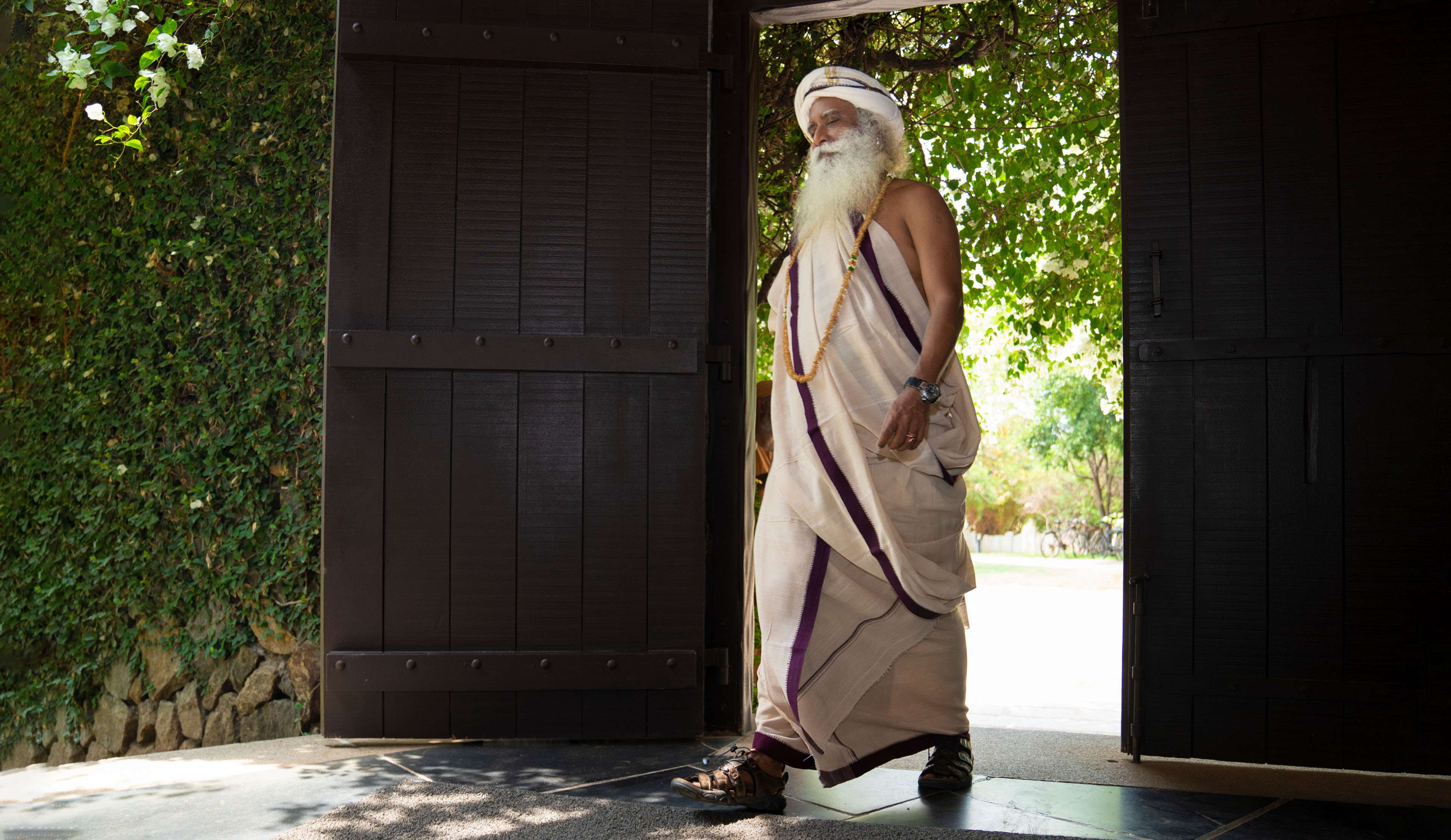

Sadhguru delves into the true meaning of dharma, explaining the difference between dharma and swadharma, and the importance of establishing oneself in Yoga before getting into action.
Questioner: Namaskaram, Sadhguru. In the Mahabharat, Krishna speaks about swadharma. What is the difference between dharma and swadharma?

Sadhguru: Dharma is not a religion, as it is being portrayed today. Dharma means “the law.” There is an ultimate law that governs all life, animate and inanimate. Swa means “self”; so swadharma is “the law of the self.” It is about the nature of the self, and how it operates. As there are laws of the physical, there is a law of the self. Krishna says that you must live by the laws of the self, not by the physical laws.
If you live by the physical laws, today we may be friends, and tomorrow, something may come up, and we may be fighting. This is happening not just between nations, communities, and societies, but even in the closest relationships – between husband and wife, father and child, and mother and child. Because this is the physical law: you sit there, I sit here; if we feel like it, we will hug. But if we sit on each other’s head, it will not work.
Or, let’s say if a mosquito just sits there, you will probably leave it. But if it starts biting, you will swat it. This is the nature of the physical. Likewise, when Arjuna laments, “How can I kill my brother, my grandfather, and my Guru,” who are on the opposite side of the battle, Krishna tells him, “Your dharma as a warrior is to fight. If you run away, you will be seen as a coward, not a peaceful person. You should have talked peace well before. Now that you are on the battlefield, you will have to kill. This is not your choice or theirs; it is the way of the physical.”

The physical exists with boundaries. If there is a transgression of boundaries, let’s say your enemy crosses a boundary with you, there will be trouble. The same is true with your neighbor, friend, spouse, child, and everyone else in the world. For everyone, there is a boundary, no matter how dear they may be to you. Only when we maintain the boundary, can things work in the physical world. Transgressions of the boundary will trigger violence. It may begin with words, and be followed by pushing, and then chopping. Do not think that it will not happen to you; you will also do it. This is the way of the physical.
Krishna says that if you do not want to struggle with that, you should follow your swadharma, the way of the self where there are no boundaries. Then you can sit here and be everywhere; or you can sit here and be nowhere. That means there will be no transgression; you will not transgress anyone, nor will anyone transgress you. If you experience this, I do not have to tell you to fight a war. But if you live by the physical laws and try to avoid the fight, it will not help; you will still have to fight.
To follow the swadharma, you must turn inward. If you live by the law of the physical, collisions are just a step away. You have to dodge them; otherwise, you will inevitably collide with someone. Every life has their own dharma. What is good for one, may not be good for the other. For a king, there is one dharma; for a warrior, there is another dharma. For a husband, there is one dharma; for a wife, there is another dharma. Parents have one dharma; children have another dharma. These are all different interests, and people’s dharma could clash at any point.

That is why Krishna said, “Yogasthah kuru karmani,” which means, “First establish yourself in Yoga; then act.” Yoga is a dharma, and Yoga means union. First establish yourself in Yoga, then other dharmas, and make it in such a way that you do not clash with others at every point. So, first establish yourself in Yoga before entering into action in the world. When it comes to action, each one of us has a different dharma.
You must craft your dharma in such a way that you can pass through a crowd with the least amount of resistance. Whichever way, there will be some resistance and friction. But if you create too much friction, you will not get anywhere. This is a profound wisdom ingrained in this culture. Even recently, when asked about a conflict happening in the world, one of the political leaders in the country just said one sentence: “This is not an era of war.” Because we are not fighting with sticks or swords; our instruments of war are such that it is no more an era of war. If you try to settle things that way, the friction will burn up everything.

Right now, people are discussing a possible nuclear conflagration as if it could happen at any moment. If someone makes a couple of mistakes, it could get us in that direction. So, the first thing is to establish yourself in Yoga. Yogic postures are not about building big muscles but about stability. “Sthira sukham asanam” – your asana should be comfortable and stable.
If you do not comprehend cosmic consciousness, you can still understand that all of us have come from the same soil, and we will go back to the same soil. Our bodies are all made of the same building material. You may be experiencing yourself only as a body, but even this body is in unity with everything. All of us are breathing air from the same bubble. Once you are conscious that this is all one, whichever direction you want to go, you will create a dharma that allows you to go through life with the least amount of resistance. This is the swadharma.